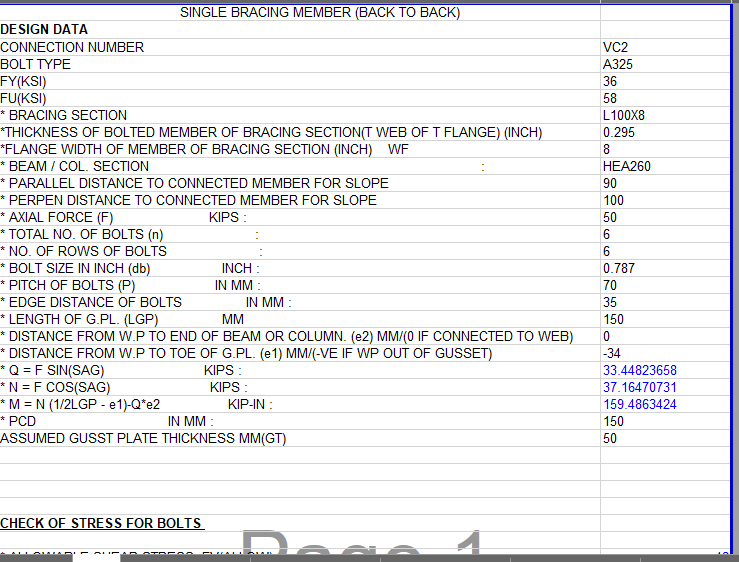-
 MS Office Home & Business 2024 – Lifetime License Key – Mac/PC$150.00 – $160.00
MS Office Home & Business 2024 – Lifetime License Key – Mac/PC$150.00 – $160.00 -
![AXIAL FORCE-AF-DOUBLE - SINGLE BRACING MEMBER (BACK TO BACK) 4 [Retail] Office 2021/2019/2016 Pro Plus Activates 5 PCs Online](https://civilmdc.com/wp-content/uploads/2024/05/Microsoft-Office-professional-plus-all-in-one-free-download-e1717158603220-300x300.jpg) [Retail] Office 2021/2019/2016 Pro Plus Activates 5 PCs Online$50.00 – $120.00
[Retail] Office 2021/2019/2016 Pro Plus Activates 5 PCs Online$50.00 – $120.00 -
 Microsoft office /Windows Activation Service for Phone Activation Method (Get Confirmaiton ID)$3.00
Microsoft office /Windows Activation Service for Phone Activation Method (Get Confirmaiton ID)$3.00 -
 MS SQL Server 2022 Standard | 1 Key for 1 PC$80.00
MS SQL Server 2022 Standard | 1 Key for 1 PC$80.00 -
 Youtube Premium | 4 months Premium Membership$10.00
Youtube Premium | 4 months Premium Membership$10.00 -
Product on sale
 Adobe Stock 40 creditsOriginal price was: $99.00.$20.00Current price is: $20.00.
Adobe Stock 40 creditsOriginal price was: $99.00.$20.00Current price is: $20.00. -
Product on sale
 MS Office 2021 Home & Business 1 MAC Bind for iOSOriginal price was: $429.00.$85.00Current price is: $85.00.
MS Office 2021 Home & Business 1 MAC Bind for iOSOriginal price was: $429.00.$85.00Current price is: $85.00. -
 MS Office 365 Personal | Family Plan on Your Email Id – 1 Year subscription$30.00 – $66.00
MS Office 365 Personal | Family Plan on Your Email Id – 1 Year subscription$30.00 – $66.00 -
 MS Project Professional 2024 | 2021 | 2019 | 2016 1 PC Online key Activation$20.00 – $80.00
MS Project Professional 2024 | 2021 | 2019 | 2016 1 PC Online key Activation$20.00 – $80.00 -
Product on sale
 Adobe Creative Cloud (All apps) – PersonalOriginal price was: $560.00.$200.00Current price is: $200.00.
Adobe Creative Cloud (All apps) – PersonalOriginal price was: $560.00.$200.00Current price is: $200.00. -
 Windows Server 2019 Online Key$22.00
Windows Server 2019 Online Key$22.00 -
 MS Office Visio Professional 2024 | 2021 | 2019 | 2016 PC Online Key Activation$20.00 – $80.00
MS Office Visio Professional 2024 | 2021 | 2019 | 2016 PC Online Key Activation$20.00 – $80.00 -
Product on sale
 MS 2019 Project Professional Windows 1 PC Online keyOriginal price was: $429.00.$22.00Current price is: $22.00.
MS 2019 Project Professional Windows 1 PC Online keyOriginal price was: $429.00.$22.00Current price is: $22.00. -
 McAfee LiveSafe Internet Security Antivirus 1 PC – 10 YEARS – Key$29.00
McAfee LiveSafe Internet Security Antivirus 1 PC – 10 YEARS – Key$29.00 -
 Office Professional 2016 /2013/2010 – Lifetime License Key – 1PC$14.00 – $16.00
Office Professional 2016 /2013/2010 – Lifetime License Key – 1PC$14.00 – $16.00
When designing a double-single bracing member configuration (back-to-back) subjected to axial forces, it means two individual bracing members are placed back-to-back to provide increased strength and stiffness. Here’s an outline of the design considerations for the axial force (AF) on a double-single bracing member:
- Determine the applied axial load: Identify the magnitude and direction of the axial force acting on the double-single bracing member configuration. This can be obtained from the structural analysis of the overall system or the specific loading conditions.
- Material selection: Choose an appropriate material for the bracing members based on factors such as strength, stiffness, and durability. Consider the allowable stress and safety factors specified by applicable design codes and standards.
- Calculate the required cross-sectional area: Determine the required cross-sectional area of each individual bracing member to resist the applied axial force. This can be done using engineering equations or software tools considering the material properties and the desired safety factor.
- Bracing member configuration: Select the appropriate configuration for the individual bracing members based on the structural requirements and available space. Common configurations include solid round bars, hollow tubes, or built-up sections like angles or channels.
- Check for buckling: Evaluate the resistance to buckling for each individual bracing member. Analyze their slenderness ratios (length-to-thickness or length-to-radius ratio) and compare them to critical buckling limits specified in design codes. If necessary, consider adding additional stiffeners or using thicker sections to increase their buckling resistance.
- End connections: Design suitable end connections for each individual bracing member to transfer the axial load effectively. These connections should provide adequate strength and rigidity to avoid any localized stress concentrations.
- Connection between bracing members: Design a connection detail between the two bracing members where they are joined back-to-back. This connection should provide sufficient strength to transfer the axial load between the bracing members and ensure their alignment.
- Consider fabrication and installation constraints: Take into account practical aspects such as the availability of standard section sizes, fabrication limitations, and ease of installation when finalizing the design.
- Quality control and inspection: Implement quality control measures during fabrication and construction to ensure that the bracing members and their connections meet the specified design requirements. This can include visual inspections, non-destructive testing, or load testing, depending on the project’s specifications.
- Documentation and compliance: Document the design calculations, material specifications, fabrication details, and any necessary certifications or compliance with relevant design codes and standards.
It is crucial to consult with a professional structural engineer or use specialized structural analysis and design software to ensure accurate calculations and compliance with safety standards for designing the double-single bracing member configuration subjected to axial forces.
-
 Bitdefender Total Security Antivirus | Genuine Activation Code$30.00
Bitdefender Total Security Antivirus | Genuine Activation Code$30.00 -
 IDEA StatiCa Education$30.00
IDEA StatiCa Education$30.00 -
 Stealth Writer AI | Bypass AI Detection | Get 100% Human Score$10.00
Stealth Writer AI | Bypass AI Detection | Get 100% Human Score$10.00 -
 Adobe Acrobat XI Professional with License Key Activation$29.00
Adobe Acrobat XI Professional with License Key Activation$29.00 -
 Autocad 2007 – OFFLINE INSTALLER + Video Tutorial Install and activation – LIFETIME$7.00
Autocad 2007 – OFFLINE INSTALLER + Video Tutorial Install and activation – LIFETIME$7.00 -
 ChatGPT PLUS Subscription$7.00
ChatGPT PLUS Subscription$7.00 -
 ESET Internet Security Antivirus | 1 Year License$20.00
ESET Internet Security Antivirus | 1 Year License$20.00 -
 Course Hero Account
Course Hero Account1 month
$10.00 -
 General Software Collection | Request books, Codes, Research Articles | Request Software on Demand$3.00 – $35.00
General Software Collection | Request books, Codes, Research Articles | Request Software on Demand$3.00 – $35.00 -
 Vmware Workstation 16 Pro Lifetime License$150.00 – $199.00
Vmware Workstation 16 Pro Lifetime License$150.00 – $199.00 -
 NORD VPN/IP Vanish Account Subscription 6 Month | 1 Year | 2 Years$20.00 – $60.00
NORD VPN/IP Vanish Account Subscription 6 Month | 1 Year | 2 Years$20.00 – $60.00 -
 Internet Download Manager IDM Version 6.41 fully lifetime activation with installation video | 5 times faster download (Pre-Activated)$6.00
Internet Download Manager IDM Version 6.41 fully lifetime activation with installation video | 5 times faster download (Pre-Activated)$6.00 -
 Adobe Acrobat Pro DC 2024 | 2023 | 2022 | 2021 | 2020 | Latest Full Version | Lifetime$10.00 – $20.00
Adobe Acrobat Pro DC 2024 | 2023 | 2022 | 2021 | 2020 | Latest Full Version | Lifetime$10.00 – $20.00 -
![AXIAL FORCE-AF-DOUBLE - SINGLE BRACING MEMBER (BACK TO BACK) 31 Sketch Up Pro 2025 | 2024 | 2023 | 2022 | 2021 Full Package Bundle + Vray 7 + Enscape 4.4 + Thea Render 3.5 [Lifetime & Full]](https://civilmdc.com/wp-content/uploads/2022/03/SketchUp-2025-300x300.jpg) Sketch Up Pro 2025 | 2024 | 2023 | 2022 | 2021 Full Package Bundle + Vray 7 + Enscape 4.4 + Thea Render 3.5 [Lifetime & Full]$10.00 – $45.00
Sketch Up Pro 2025 | 2024 | 2023 | 2022 | 2021 Full Package Bundle + Vray 7 + Enscape 4.4 + Thea Render 3.5 [Lifetime & Full]$10.00 – $45.00 -
 Adobe 2024 | 2023 | 2022 Full Collection$25.00 – $35.00
Adobe 2024 | 2023 | 2022 Full Collection$25.00 – $35.00



 Visit
Visit 